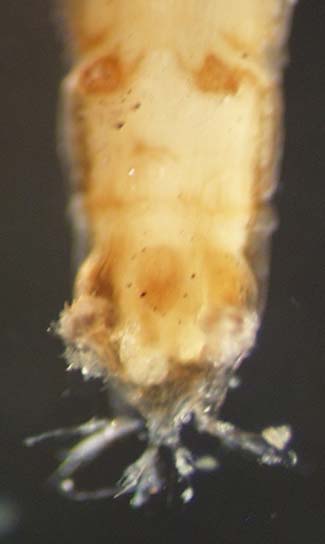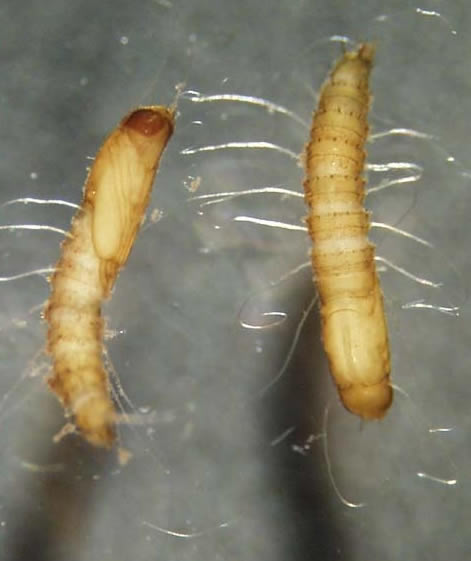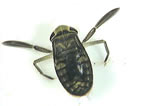
THE XERCES SOCIETY FOR INVERTEBRATE CONSERVATION Aquatic Invertebrates in Pacific Northwest Freshwater Wetlands |
| Identify taxa |
Empididae (dance flies) |
Larvae of aquatic Empididae may be found in streams and at the margins of streams, ponds and marshes. These small, predatory flies are usually tan to white with 7
or 8 pairs of well-developed prolegs on the underside of their abdominal
segments. There are various shapes, sizes, and numbers of hairs on their posterior end. Head parts are often visible
through the skin at the anterior end, but are reduced to
a few long, dark rods. This family gets its name from the movements of the adults when swarming. Dance fly adults are predatory; males may present potential mates with prey and be chosen by females on the basis of their offering. |
Size: small to medium Identifying feature(s): usually tan to white in color with 7 or 8 pairs of well-developed prolegs Habitat: flowing waters and the margins of still waters; wetlands Tolerance to pollutants: moderate |
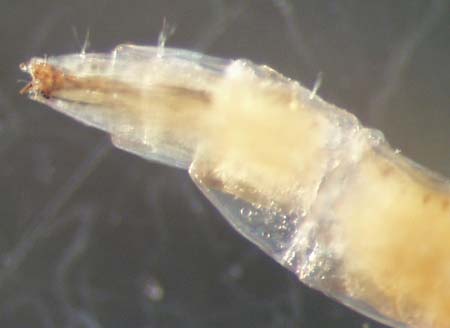 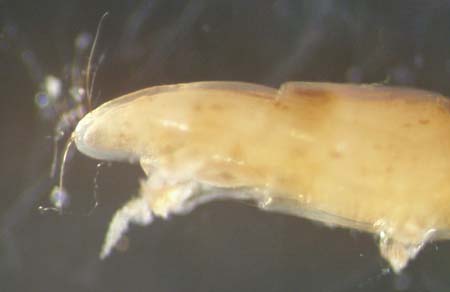 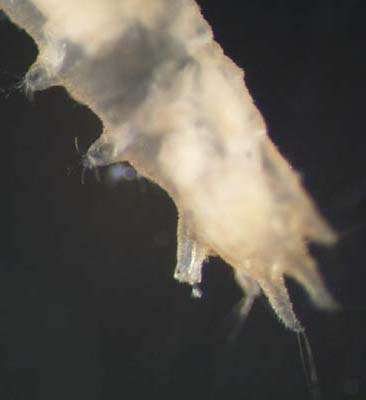 |
|
 |
|
© 2007 Xerces Society
Contact info@xerces.org

